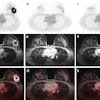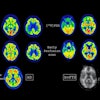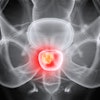
A well-conceived trial run prior to PACS migration can identify the most important problems institutions will encounter during their switch to a replacement PACS and enable problem-solving ahead of time, Dutch researchers reported at RSNA 2013 in Chicago.
"This will both ensure a higher rate of successful migration and [fewer] problems during the actual migration process," wrote a team led by Peter van Ooijen, PhD, of the University Medical Center Groningen (UMCG) in the Netherlands.
Transitioning to a new PACS vendor is a challenging task, and one of the most difficult aspects is migrating legacy DICOM imaging data to the new environment, according to the authors. The UMCG team recently used a standard "take-over" tool from their institution's new PACS vendor to perform a test migration of selected dates from their previous PACS, which held 12 years of image data.
The PACS migration tool works in three steps. In the first phase, a DICOM C-Find function is performed to obtain database information. Next, the metadata (i.e. nonpixel data) is migrated to fill in the database on the replacement PACS, according to the researchers. The process is then completed with the migration of the corresponding pixel data (i.e. the actual DICOM images).
The group selected a total of 67 sample days for the test migration. The more recent the data, the higher the sampling frequency used for the test set. For example, 12 sample days were selected from 2012, while three sample days were chosen from 2000.
Evaluation of the migration was performed via technical testing and by visual inspection of the actual image data, which involved comparing image presentation on both PACS' viewing workstations. Multiple periods of issue solving were available during the test process, including three points of decision-making to continue or revisit a previous step in the process, according to the group.
Overall, 90,027 studies were transferred for the 67 sample test days. Technical tests showed 91% of studies were successfully migrated. Visual tests of 2,190 studies over a three-week period revealed 73 issues that needed to be solved, most of which could be solved before starting the actual migration or tackled during or after the migration.
"One issue remained to be solved related to the presentation of measurements, which was not a show stopper for the PACS transition, but needs special attention to be solved eventually," the authors wrote.
The first round of the test migration process found that the tool's configuration was related to 18 of the 73 issues, and these problems were solved. An additional 39 issues were also solved.
The second round found that six of 16 issues could not be solved due to functionality issues. Nine of the remaining 10 issues were delayed to be implemented or solved during the actual migration process, while one issue was related to presentation of measurements and could not be solved in the short term, the researchers reported.
Some examples of major issues encountered in the test migration included: improper display of hospital ID and national ID in the replacement PACS; incorrect display of measurements (i.e. overlap of information, burned in, missing information) in the replacement PACS' viewer; improper display of scanned mammography films that cause the system to hang due to skin-detection failure because of insufficient image quality; missing examinations due to the C-Find query not providing correct feedback from the old PACS; incorrect or empty body part field in the DICOM header, which is required for configuration of display protocols on the new PACS; and missing data in the replacement PACS for some review dates, according to the group.
Performing a test migration before implementation of a new PACS is beneficial, van Ooijen told AuntMinnieEurope.com.
"In our case, many problems with data migration were already identified and solved during the test migration, which will ensure a higher level of trust in the actual data migration," he said.
This also helps avoid delays in migration as critical issues have already been tackled and solved before migration has even started, he said. It's also "important to really mimic the real migration procedure during the test migration in order to also determine problems in the technical setup of the migration environment," van Ooijen said.



















